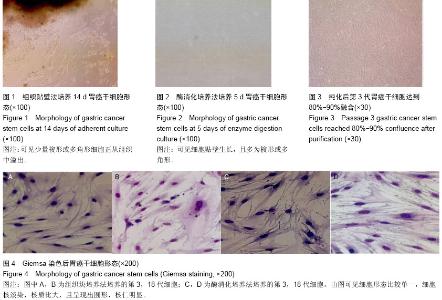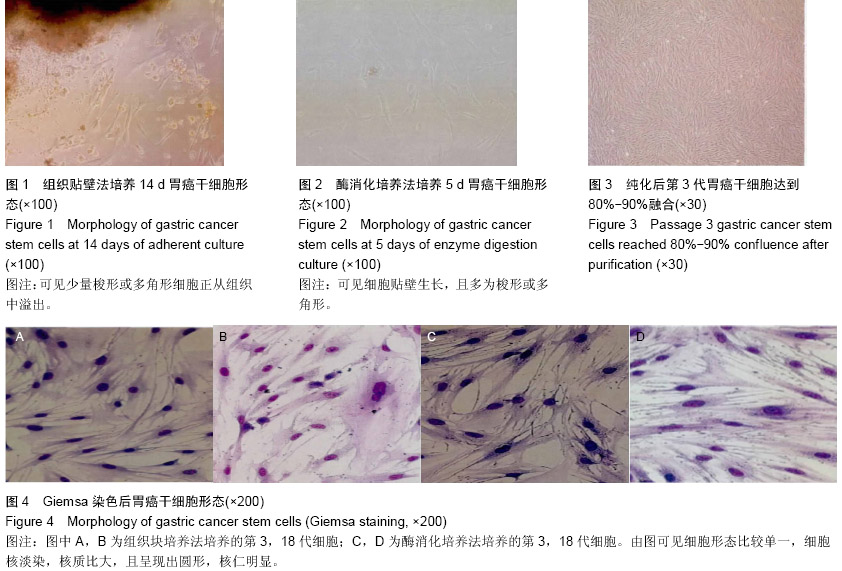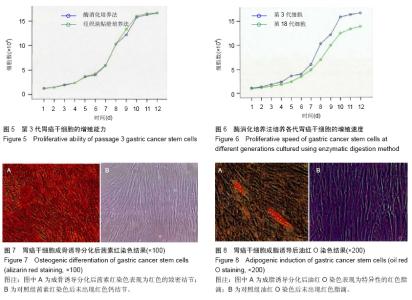| [1] 孙健,张建龙,叶华,等.胰腺中段切除术在胰腺良性及低度恶性肿瘤治疗中的应用价值[J/CD].中华肝脏外科手术学电子杂志, 2013,2(5):302-305.
[2] 宗杰,王岩,徐建明,等.影响晚期胃癌患者疗效和预后的相关因素分析[J].临床肿瘤学杂志,2012,17(8):721-725.
[3] 王浩,周岩冰,陈士远.进展期胃癌淋巴结转移规律的Logistic回归分析[J].青岛大学医学院学报,2008,44(5):414-415,418.
[4] 赵林,应红艳,管梅,等.老年胃癌的临床特点[J].中国医学科学院学报,2010,32(4):412-416.
[5] Fu X, Meng Z, Liang W, et al. miR-26a enhances miRNA biogenesis by targeting Lin28B and Zcchc11 to suppress tumor growth and metastasis. Oncogene. 2014;33(34):4296- 4306.
[6] Wu Q, Yang Z, Wang F, et al. MiR-19b/20a/92a regulates the self-renewal and proliferation of gastric cancer stem cells. J Cell Sci. 20135;126(Pt 18):4220-4229.
[7] Hamerlik P, Lathia JD, Rasmussen R, et al. Autocrine VEGF-VEGFR2-Neuropilin-1 signaling promotes glioma stem-like cell viability and tumor growth. J Exp Med. 2012; 209(3):507-520.
[8] 张亚兰,朱静,田杰,等.骨髓间充质干细胞与胶质瘤细胞非接触共培养后相关生物学特性分析[J].第三军医大学学报,2010,32(7): 630-633.
[9] 乔玲,叶丽红,张晓冬.人间充质干细胞抑制乳腺癌细胞增殖作用的实验研究[J].南开大学学报:自然科学版,2007,40(2):73-78.
[10] 邵志红,王培军,李铭华,等.大鼠骨髓间充质干细胞移植对Walker-256肝癌生长影响的实验研究[J].中华医学杂志, 2009, 89(7):491-496.
[11] 毛飞,许文荣,许化溪,等. 骨髓间质干细胞下调免疫反应的实验研究[J].中国免疫学杂志,2006,22(7):629-635.
[12] 孙晓春,许文荣,姚堃,等.胎儿骨髓间质干细胞体外诱导为神经细胞的初步实验研宄[J].中国生物医学工程学报,2004,23(1): 40-43.
[13] 陈忠,许文荣,钱晖,等.干细胞标志物Nanog的检测在胃癌诊断中的意义[J].临床检验杂志,2009,27(1):6-8.
[14] Lu Z, Lu M, Zhang X, et al. Advanced or metastatic gastric cancer in elderly patients: clinicopathological, prognostic factors and treatments. Clin Transl Oncol. 2013;15(5):376- 383.
[15] Bilir C, Engin H, Bakkal BH, et al. Chemotherapy in elderly patients with metastatic gastric cancer; a single Turkish cancer center experience. Med Glas (Zenica). 2013;10(2): 298-303.
[16] Tsushima T, Hironaka S, Boku N, et al. Comparison of safety and efficacy of S-1 monotherapy and S-1 plus cisplatin therapy in elderly patients with advanced gastric cance Int J Clin Oncol. 2013;18(1):10-16.
[17] Mittal A, Gupta SP, Jha DK, et al. Impact of various tumor markers in prognosis of gastric cancer. A hospital based study from tertiary care hospital of Kathmandu valley. Asian Pac J Cancer Prev. 2013;14(3):1965-1967.
[18] 林懿,汪政武. 螺旋CT三期扫描在胃癌术前评估及分期中的应用价值[J].当代医学:学术版,2008,(6):4-6.
[19] Golestaneh AF, Atashi A, Langroudi L, et al. miRNAs expressed differently in cancer stem cells and cancer cells of human gastric cancer cell line MKN-45. Cell Biochem Funct. 2012;30(5):411-418.
[20] Ryu HS, Park do J, Kim HH, et al. Combination of epithelial-mesenchymal transition and cancer stem cell-like phenotypes has independent prognostic value in gastric cancer. Hum Pathol. 2012;43(4):520-528.
[21] Ishimoto T, Oshima H, Oshima M, et al. CD44+ slow-cycling tumor cell expansion is triggered by cooperative actions of Wnt and prostaglandin E2 in gastric tumorigenesis. Cancer Sci. 2010;101(3):673-678. |



